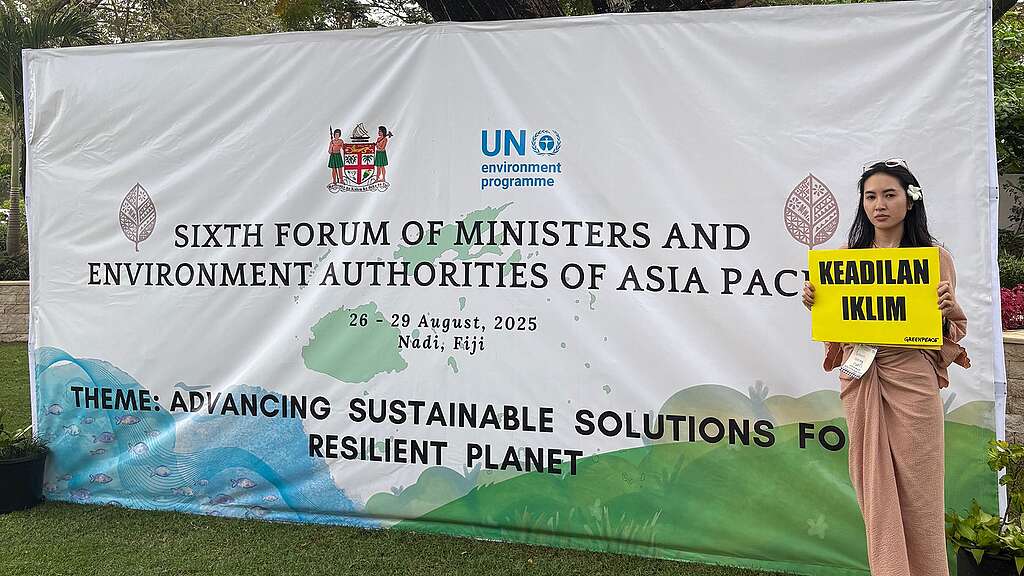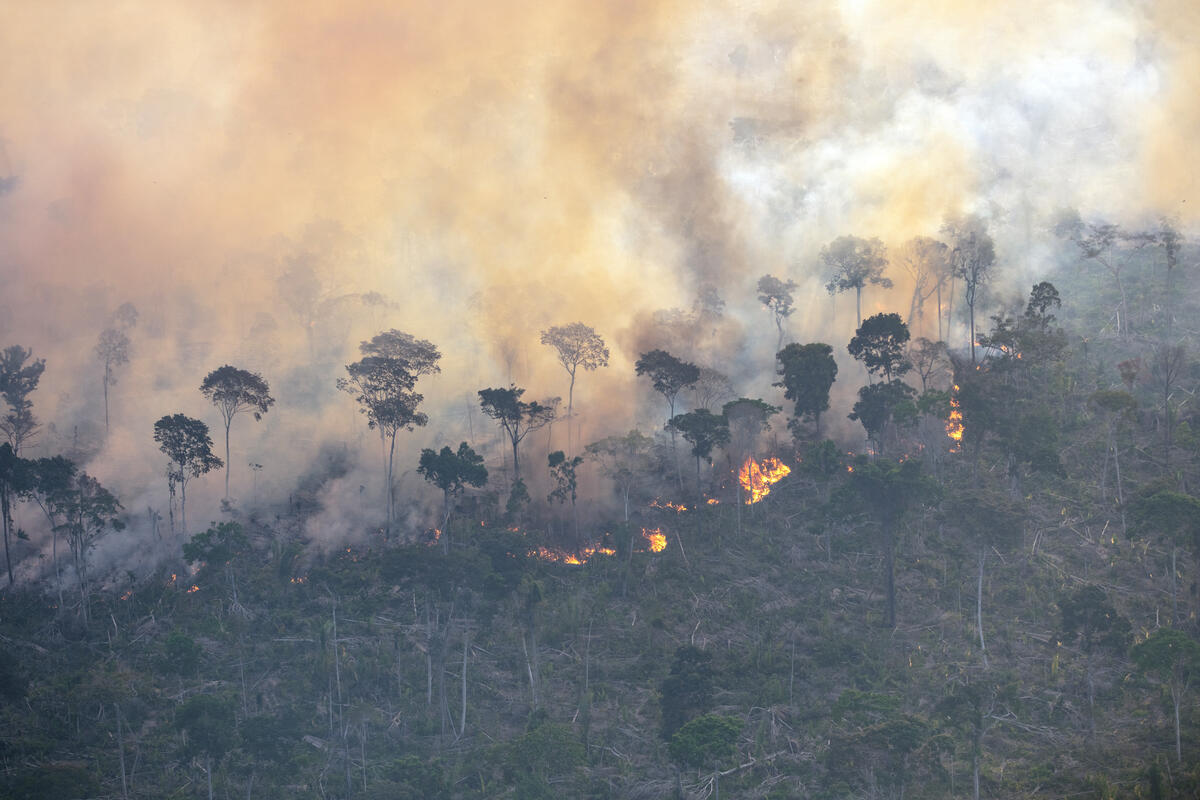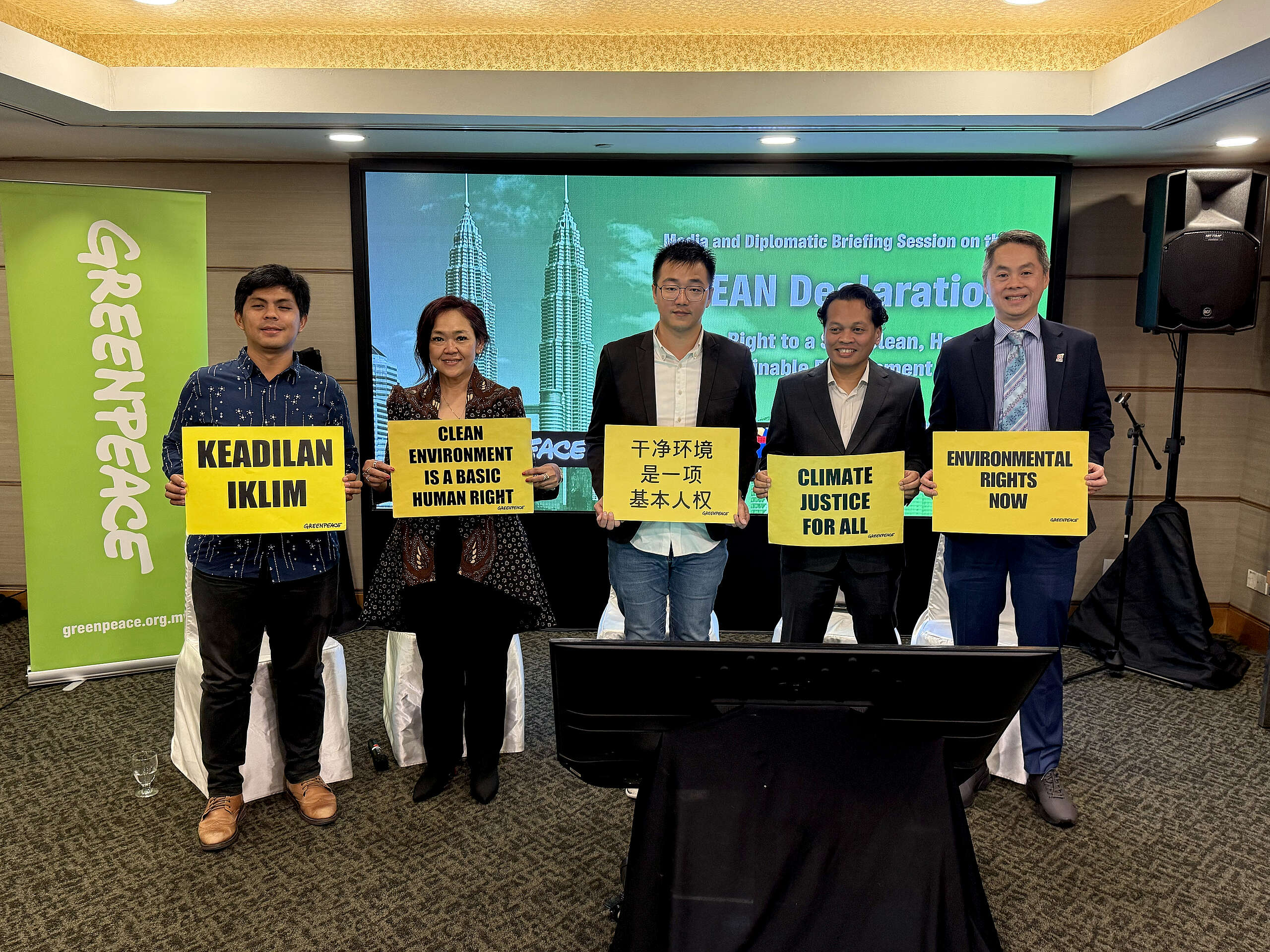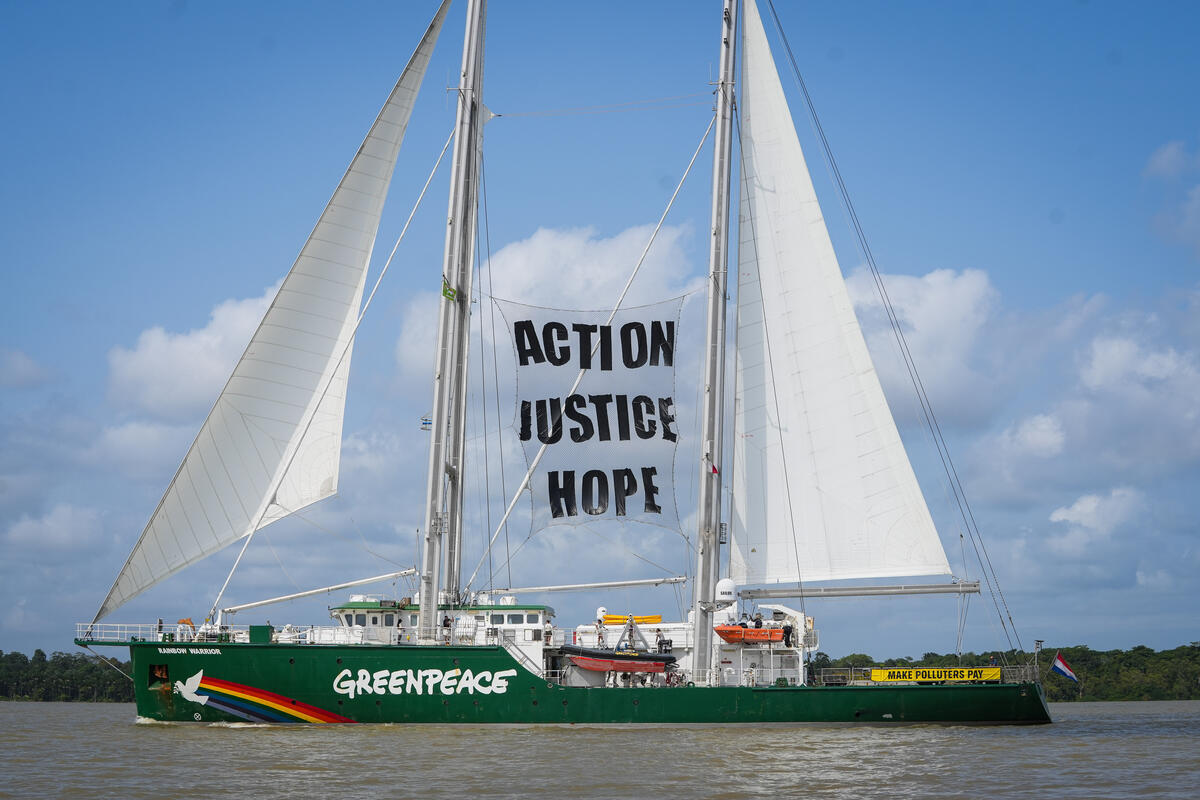Greenpeace Southeast Asia’s engagement and intervention at the UN Environment Assembly’s 6th Forum of Ministers and Environment Authorities of the Asia Pacific (6th AP Forum).
Fiji welcomes global environmental leaders
Beautiful Nadi, Fiji, provided a stunning yet poignant backdrop for the UN Environment Assembly’s 6th AP Forum. As delegates gathered in this Pacific island nation already facing the frontlines of climate change, Greenpeace Southeast Asia (GPSEA) arrived with a clear mission: transform UNEA-7 from an “Assembly of compromise” into an “Assembly of courage.”
The irony wasn’t lost on anyone, discussing environmental protection while surrounded by culturally rich traditions, ancestral lands, biodiversity and ecosystems that exemplify what we stand to lose. Strong voices from the Pacific island nations amplified the living reminder of why every intervention, every policy proposal, and every call to action mattered more than ever.

Here are the issues that the team raised:
1. The Critical Mineral Crisis
GPSEA’s most powerful intervention is centred on responsible critical mineral governance, addressing the urgent need to balance renewable energy transition with environmental protection. The statistics were sobering: 42% of the Asia Pacific’s natural World Heritage sites—35 out of 84—overlap with extractive assets, according to UNESCO findings.
Our key demands included:
- Legal designation of no-go zones in UNESCO World Heritage Sites, deep-sea ecosystems, and Indigenous territories
- Mandatory Free, Prior and Informed Consent (FPIC) from Indigenous Peoples and Local Communities
- Full lifecycle assessment standards aligned with the Sustainable Development Goals
- Develop robust guidelines for sustainable and rights-based mineral value chains
The message was clear: the race for transition minerals cannot come at the expense of the communities and ecosystems we’re trying to protect through renewable energy.
2. Breaking the silence: Environmental impacts of war turning heads
In a groundbreaking moment, GPSEA directly addressed the environmental devastation caused by armed conflicts. This marked a significant shift in bringing war-related environmental destruction into mainstream UN environmental discourse.
The harsh reality presented:
- Communities face rapidly growing soil, water, and air pollution
- Irreversible damage to natural ecosystems compounds human suffering
- Military emissions remain largely unreported in global climate accounting
GPSEA calls for UNEP to assess the environmental impacts of armed conflicts and for Member States to integrate environmental restoration into peace processes. This is a matter of both accountability and justice.
3. “No-Go Zone”: Drawing boundaries for biodiversity and Indigenous Peoples’ rights
One of GPSEA’s most concrete policy pushes involved emphasising the “No-Go Zone”, to legally protect critical and biodiversity-rich areas from mining activities. This wasn’t just about environmental protection; it was about environmental justice and Indigenous rights.
Protected zones would include:
- Indigenous Peoples’ territories
- UNESCO World Heritage Sites
- Global Geopark sites
- High-carbon ecosystems
- Deep-sea environments
- High conservation value areas
The push built on previous UNEA resolutions 6/8 and 5/12, pushing for stronger, legally binding protections rather than voluntary guidelines.
4. Youth voices rising: The Asia-Pacific Environmental Manifesto 2025
GPSEA diligently provided inputs into the Asia-Pacific Youth Environment Manifesto 2025, amplifying young voices calling for transformative change across multiple environmental fronts. The manifesto’s ambitious targets included:
- 75% reduction in plastic production with upstream measures
- Transition to a reuse and refill economy
- Majority voting mechanisms for the Global Plastics Treaty
- Recognition and legal designation of no-go zones, including high conservation value areas, deep-sea ecosystems, and IP&LC territories
- Environmental impacts of the war in Gaza and immediate action to protect lives, ecosystems, and environmental resilience, and urges that ceasefire and peace processes integrate environmental restoration and resilience-building measures.
The youth manifesto represented more than policy proposals, it embodied intergenerational justice and the urgency felt by those who will inherit the consequences of today’s decisions.
5. Climate-Biodiversity synergy
GPSEA strongly endorsed Fiji’s proposal for greater climate-biodiversity coherence, emphasised protecting forests, coral reefs, and high-carbon ecosystems through synchronised Nationally Determined Contributions (NDCs) and National Biodiversity Strategies and Action Plans (NBSAPs).
This approach acknowledged what island nations like Fiji know intimately: climate and biodiversity crises are inseparable, and solutions must address both simultaneously. The Paris Agreement and Kunming-Montreal Global Biodiversity Framework commitments can only be met through this integrated approach.
6. Financing the future: Direct access for frontline communities
GPSEA highlighted a stark inequality: frontline communities, Indigenous Peoples, and youth receive less than one percent of climate finance, despite being the most impacted by environmental degradation and often the most effective environmental stewards.
Direct access finance mechanisms that bypass traditional intermediaries and empower those protecting forests, oceans, and livelihoods to lead solutions on the ground. This wasn’t just about funding; it was about recognising and supporting the communities already doing the work of environmental protection.
GPSEA’s message resonated beyond the conference halls: environmental protection cannot be achieved through half-measures and voluntary commitments. GPSEA interventions represented a fundamental shift toward binding commitments, environmental justice, and inclusive decision-making.
UNEA-7 must be the Assembly of courage, not compromise: safeguarding communities, ecosystems, and future generations by turning collective commitments into concrete action.
The stakes couldn’t be higher, and the time for compromise has passed.




